How to Get Rid of Accuweather box in Windows
The Accuweather box on your screen may be caused by the Accuweather application or when you are accessing it using the web. The user without any deliberate action starts receiving the Accuweather notifications in the lower right corner of his screen.

You can try the following solutions to turn off weather alerts on your system:
Solution 1: Disable Accuweather Notifications
If you just are annoyed by the notification (but not about the app/extension causing it), then disabling the Accuweather notifications may solve the problem.
- In the system’s tray, click on the Control Center icon and open Manage Notifications.
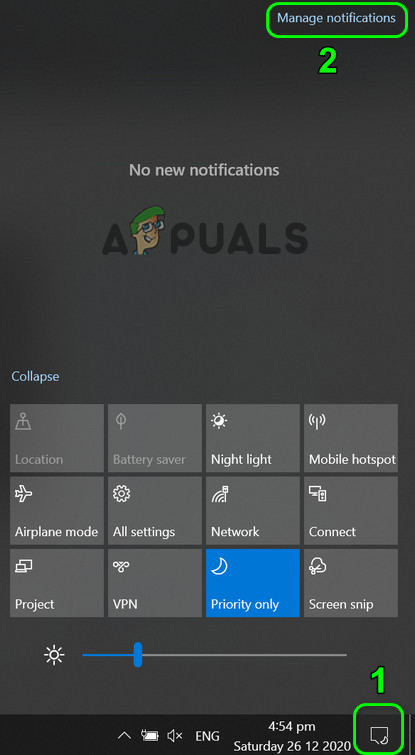
Open Manage Notifications - Then, in the section of ‘Get Notifications from These Senders’, disable the notifications for Accuweather (or Desktop Weather) and check if the issue is resolved.
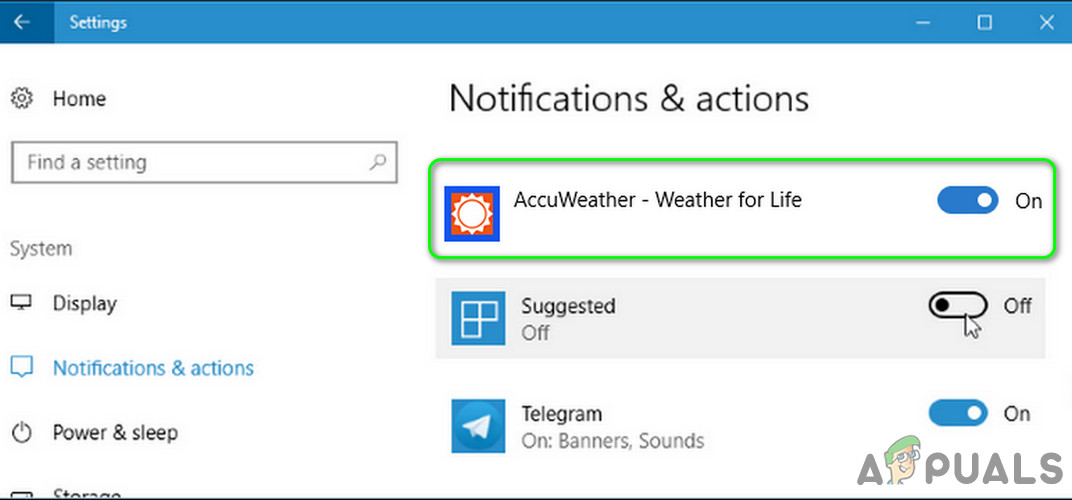
Disable Accuweather Notifications - If not, then wait for the next notification and when received, hover your mouse over it.
- Now a gear (or setting) icon will be shown, if so, click on it and then disable the notification to check if that resolves the problem.
Solution 2: Uninstall the Accuweather Application
If disabling the notifications did not work for you, then you may have to uninstall the Accuweather application.
- Open the Power User menu (by right-clicking the Windows button) and choose Apps & Features.
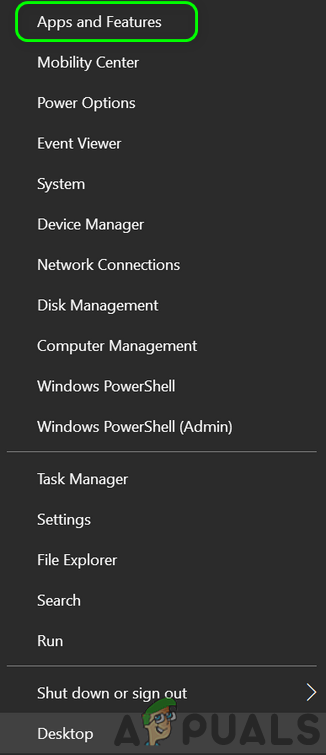
Open Apps & Features - Now expand the Accuweather application (you may find it with the name of Desktop Weather) and click on Uninstall.
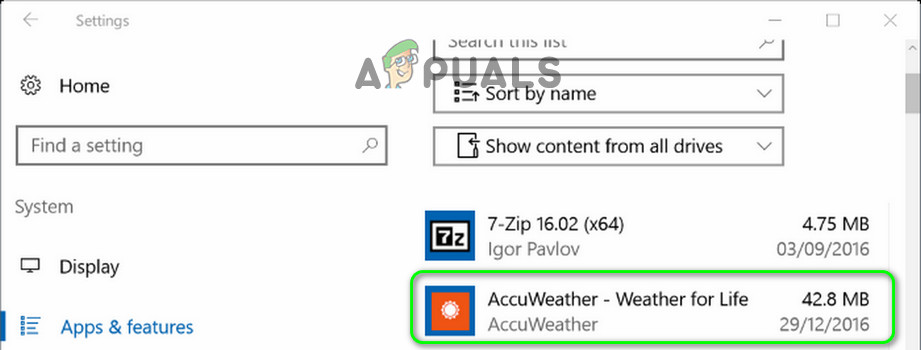
Uninstall the Accuweather Application - Then confirm to uninstall the application and wait for the removal of the application.
- Now reboot your PC and check if the Accuweather issue is resolved.
If you cannot uninstall the Accuweather (or it is not present in the application’s list), then wait for the next pop up by Accuweather. When you receive it,
- Launch the Quick Access menu by right-clicking the Windows button and choose Task Manager.
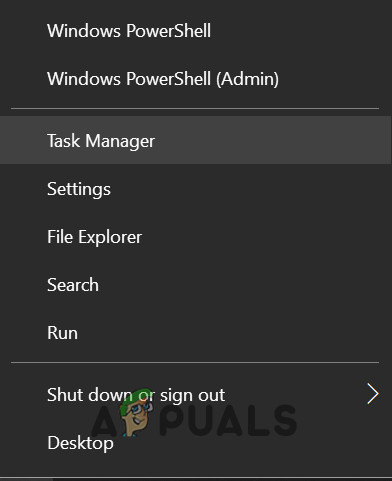
Open the Task Manager from the Quick Access Menu - Now, in the processes tab, right-click on the process (e.g., Accuweather process) causing the notification and choose Open File Location.

Open Location of Accuweather Process in the Task Manager - Now, in the window opened, go up one directory and then switch to the Task Manager windows (without closing the Accuweather folder window).
- Then right-click on the process (e.g., Accuweather process) and select End Task.
- Now switch to the Accuweather folder (opened in step 3). Then delete the folder from that location (if UAC prompt received, click Yes) and make sure to empty the Recycle Bin. Some users found the Accuweather to operate from the OEM folder like the Dell Stage folder.
- Then try to uninstall the application (under which the Accuweather was operating).
- Now reboot your PC and check if the issue is resolved.
If that did not do the trick for you, then boot your system into safe mode and check if the Accuweather notifications are stopped. If so, then clean boot your PC and check if the issue does not appear. If so, then start enabling the processes/applications one by one in the clean boot to find out the problematic one. Once found, either disable the problematic application or uninstall it and check if the issue is resolved. You can also try Process Explorer to find out the problematic application.
Solution 3: Edit the Browser Settings
If you cannot uninstall the Accuweather application, then the notification could be caused by a browser extension (or website, if permitted by the user). In this case, editing the browser’s settings may solve the problem. Before proceeding, make sure no browser extension is causing the issue.
For the Chrome Browser:
- Launch the browser and navigate to the Accuweather website.
- Now, in the address bar, click on the Lock icon and choose Site Settings.
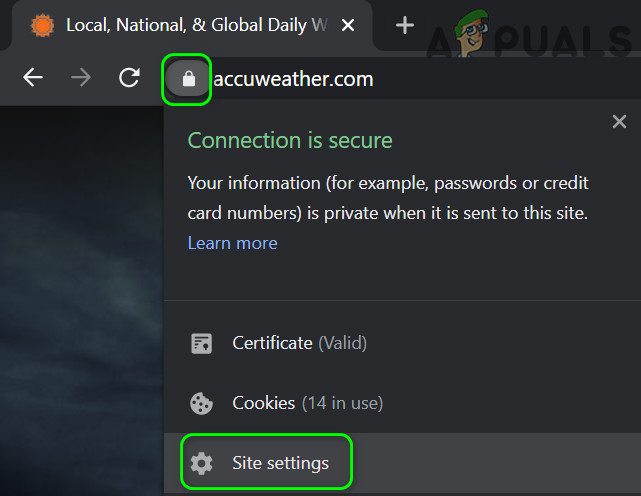
Open Site Settings of Accuweather in Chrome - Then click on the Clear Data button and then click on the Reset Permissions button.
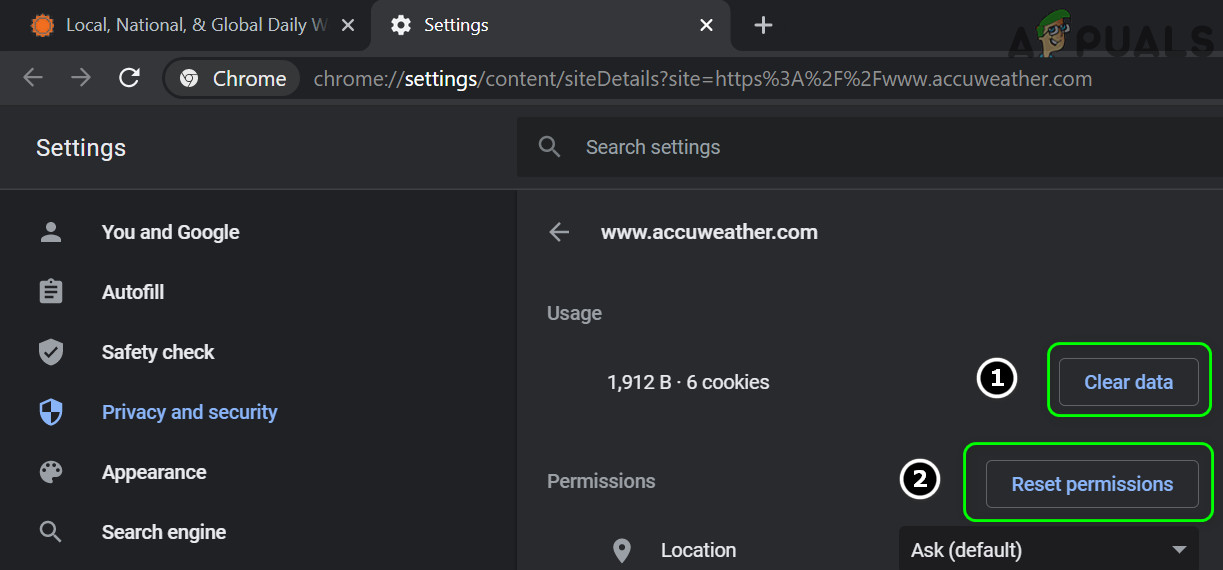
Clear Data and Reset Permissions of Accuweather Website in Chrome - Now open the dropdown of Notifications and select Block.
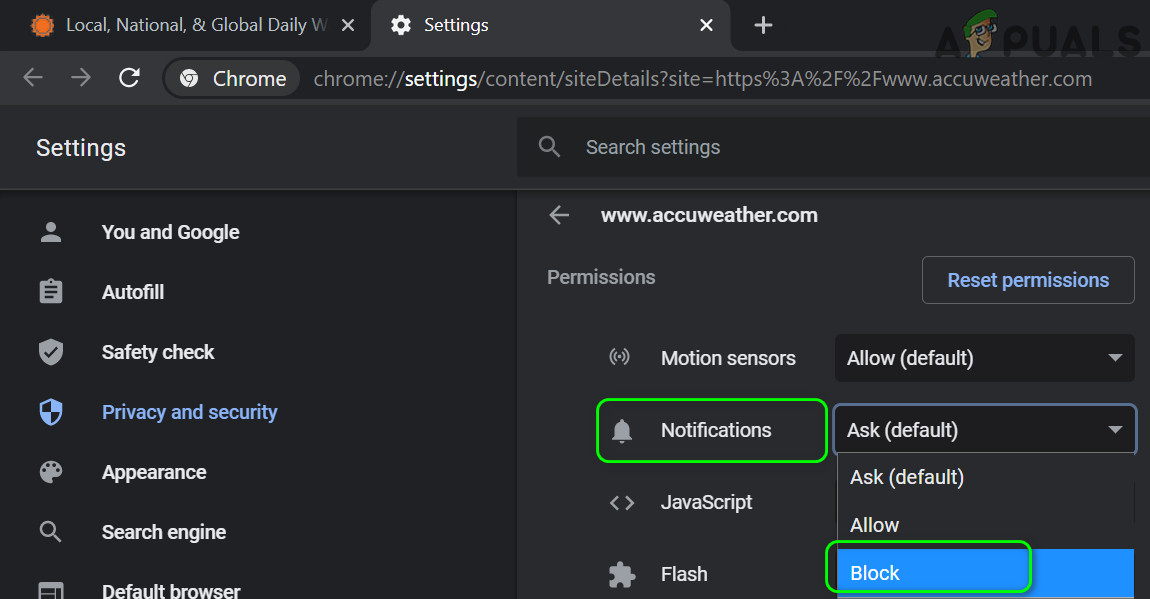
Block Notifications of Accuweather in Chrome - Then check if the Accuweather issue is resolved.
For the Edge Browser:
- Launch the browser and navigate to the Accuweather website.
- Now click on the Lock icon and choose Site Permissions.
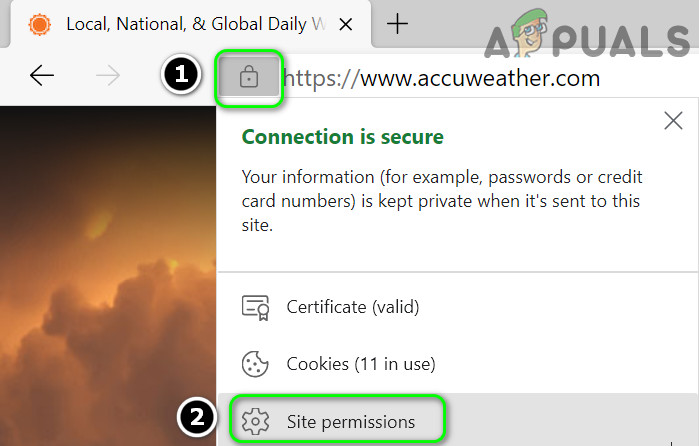
Open Site Permissions of Accuweather in MS Edge - Then click on Reset Permission and open the Notifications dropdown.
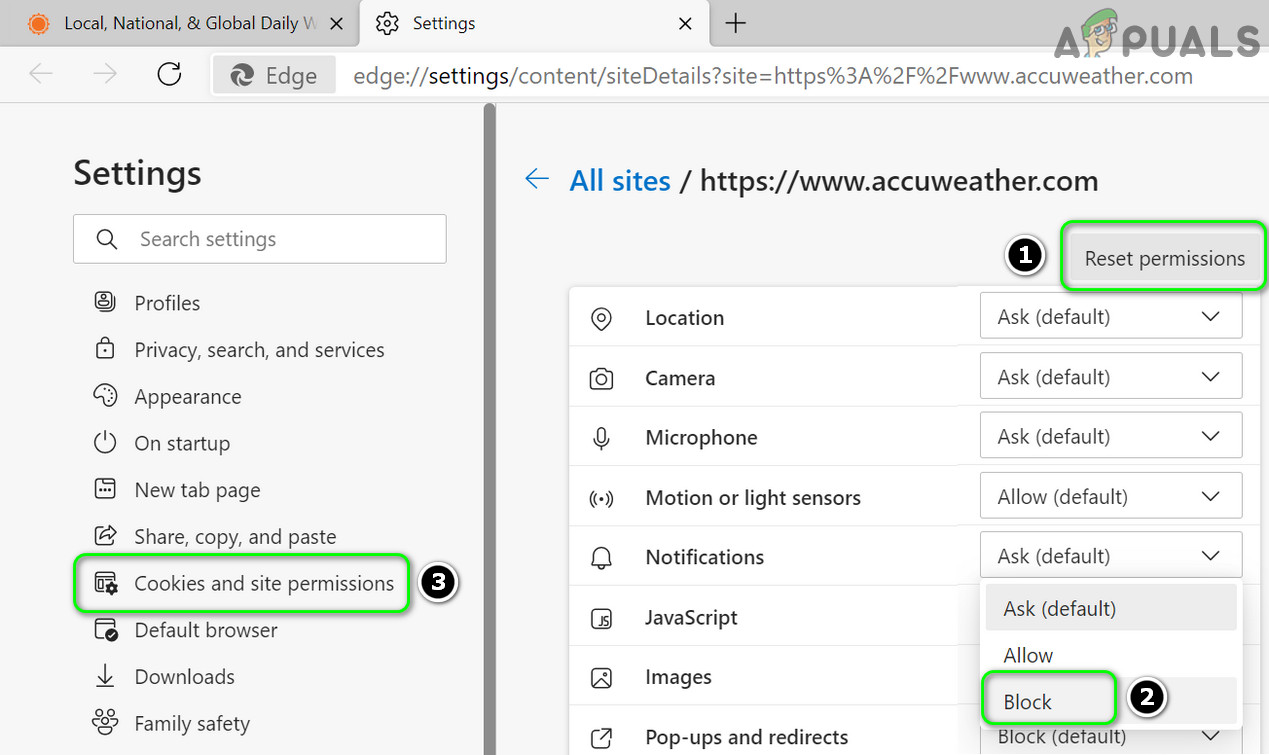
Reset Permissions of Accuweather and Block its Notifications in MS Edge - Now select Block and then, in the left pane, click on Cookie and Site Permissions.
- Then open Notifications and make sure Accuweather is listed in Block (not in Allow).
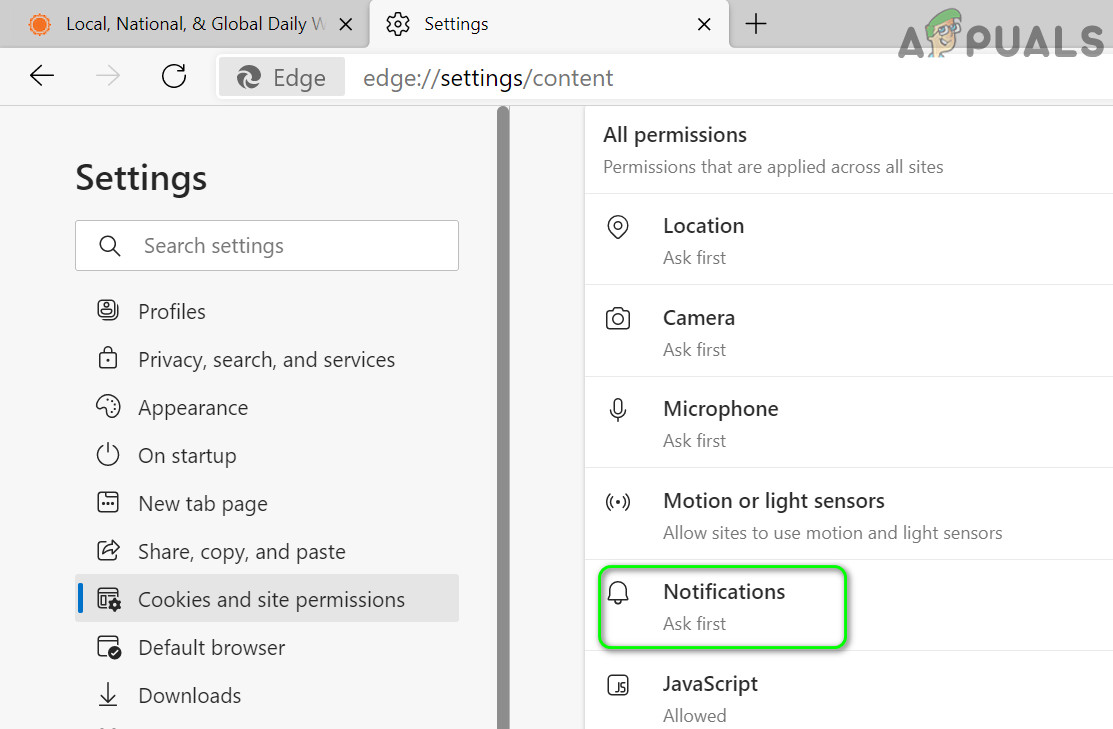
Open Notifications Permissions in MS Edge - Now check if the Accuweather issue is resolved.
- If not, then navigate to the page of Bing Saves and then steer to the Notifications tab.

Steer to the Notifications Tab in Bing Saves - Now check if the Accuweather is listed there. If so, disable it and check if the system is clear of the Accuweather notifications.
- If not, then check if disabling all the notifications on the page of Bing Saves (step 7) resolves the issue.
If that did not do the trick, then check in uninstalling the Bing application from the Apps & Features resolves the issue.
Solution 4: Use a Malware Removal Tool
If none of the solutions has worked for you, then you may use a malware removal tool to remove the Accuweather notifications. You may use any tool as per your liking, we will discuss the process for Malwarebytes.
- Use the Malwarebytes tool to remove the malware.

Malwarebytes - Then hopefully the Accuweather issue is resolved.




